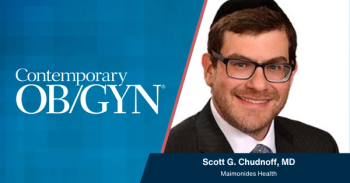
Invitation to the 32nd Annual Meeting of the AAGL
OBGYN.net Conference CoverageFrom the 31st Annual Meeting of the American Association of Gynecological Laparoscopists (AAGL)
Barbara Nesbitt: Hi, I’m Barbara Nesbitt, I’m at the AAGL in Miami and I have the privilege and pleasure of sitting with a supporter of OBGYN.net for a long time, Professor Andrew Brill, who is the President and head of the scientific program for next year’s AAGL and I’m going to let Dr Brill tell you what’s in store.
Professor Andrew Brill: Well, Barbara, next year’s program is somewhat different to what we’ve seen in the past. I should say it’s going to be in Las Vegas, which is always a fruitful place to have a meeting, and it’s at a wonderful facility, the Paris Hotel, so it’s a new facility with a centralised meeting space that’s quite huge and quite capable and I expect the meeting will be highly successful just based on the location and the space alone. But more importantly is the content of the meeting. How that’s going to vary from previous meetings is that we, as an organization, have committed ourselves to a name change to reach out to a larger constituency and, of course, this name change is not there, but it is going to reflect a dedication to all sorts of gynecology that we would call minimally invasive type of surgical gynecology, so in this sense the meeting will reflect this change and this philosophical bent by including a large array of conventional vaginal surgery, as well as conventional vaginal reconstructive surgery and both panels and debates will reflect a new and keener interest about these topics.
Barbara Nesbitt: So it will be really focused on gynecology?
Professor Andrew Brill: It will be gynecology with the focus not just on the endoscopic approach to problems, but also giving due respect to the fact that there’s vaginal surgery, there’s vaginal reconstructive surgery, there are other types of modalities, the Mirena IUD, uterine artery, not just embolisation, but uterine artery occlusion, it’s a new method of controlling abnormal uterine bleeding, that deserve equal respect today if we’re going to really increase our membership and draw interest to our organization and keep it alive and well.
Barbara Nesbitt: Well, we’re going to support you the way, hopefully, we have always done for you. We need to have the data and we’re going to, of course, have it on the website, you’ll be able to click over to the AAGL website and submit abstracts, is that correct?
Professor Andrew Brill: Correct.
Barbara Nesbitt: Later?
Professor Andrew Brill: The website will have an announcement which will be coming up over the next several months for abstracts. You should pencil in your calendar the week before Thanksgiving.
Barbara Nesbitt: All right.
Professor Andrew Brill: It’s the week everyone should dedicate to coming to Las Vegas. I also will say that I’ve always respected and enjoyed the relationship with OBGYN.net, it’s been a valuable research for me and for my patients and I look forward to continuing that relationship.
Barbara Nesbitt: I thank you and we will support this all year long and they can register also by linking to you.
Professor Andrew Brill: Thank you. Yes, they can.
Barbara Nesbitt: Thank you.
Professor Andrew Brill: Bye bye.
Barbara Nesbitt: Thank you. Bye bye, Professor.
Newsletter
Get the latest clinical updates, case studies, and expert commentary in obstetric and gynecologic care. Sign up now to stay informed.










